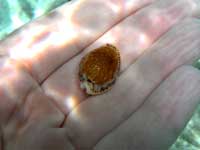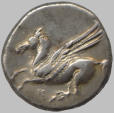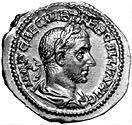
History of money: A Lydian gold coin
What is money?
Money is an agreement between people. It is an agreement that this much of something will be worth this much bread, and this much cheese, and this many slaves. But it’s convenient to be able to move money around between people, so even in the Stone Age people used small, valuable objects as money, so they could carry it around and use it to buy other things.
Early African economy
Early Indian economy
Native American economy
Early China’s economy
Mesopotamian economy
Seashells and beads: the history of money

Glass trade beads found in Botswana
Probably people started out using rare seashells and feathers as money. When they needed more money and couldn’t find enough rare seashells, they realized that you could make an object valuable by putting a lot of work into it. So they started to make their own small, rare objects by carving beads. People have also used all sorts of other things as money.
Where do seashells come from?
The invention of glass
History of silver
Where does gold come from?
They’ve used paper as money, or cocoa beans, or cowrie shells, emeralds, diamonds, gold, silver, and bronze. Beads were often a kind of money well into the 1800s. Anything small, not too heavy, and fairly rare or hard to make will work as money.
Paper money and letters of credit
The first metal coins

A cowrie shell
The earliest metal coins came from China, where people used small pieces of bronze to trade things starting around 1500 BC, possibly to replace the cowrie shells they used before that.
Coins issued by the government
Governments invented coins with guarantees around 650 BC. Governments or businesses mark this kind of coin with a promise that this coin is worth what it says it is worth. So – if you trust that government – you don’t have to weigh each coin before you accept it. The first coins of this kind were from Lydia, in West Asia. Lydian kings used the coins to pay mercenary soldiers. But many people preferred to keep on using mainly credit for trading instead.
What are mercenary soldiers?
Who were the Lydians?

History of money: a Greek coin from Corinth
Paying taxes in money
When governments began to require people to pay their taxes in money, gradually gold, silver, and bronze coins became common all over Europe, Asia, and Africa ( except for South Africa). In South America, the Aztec empire collected taxes in cocoa beans, in the same way, starting about 1400 AD. Traders even made fake cocoa beans to trick people into thinking they were money.
History of taxes
Ancient Greek money
History of cocoa and chocolate

Roman silver coin from the 200s AD
Debasing the currency
The governments that minted these coins figured out that if they didn’t have enough money, they could mix the gold with more silver to make it go further, or mix the silver with more bronze. That way they could make more coins with the same amount of metal, and have more money to pay their soldiers with. The Romans did this in the 200s AD.
The Roman economy
What is bronze?
But of course pretty soon people figured out that these coins weren’t really worth what the government said they were worth, and then they didn’t want to take those coins in stores. Or they demanded more coins, so it would be the same amount of gold or silver as before.
Learn by doing: making ancient coins
More about money
Bibliography and further reading about money:
Eyewitness: Money, by Joe Cribb (2000). Not the best in the series, but still a good introduction to exchange systems for kids.
The History of Money: From Sandstone to Cyberspace, by Jack Weatherford (1998). Great on what money is, and how it has changed over time – some conclusions are controversial.




[…] Who invented money? History of money […]
“What is money?
Money is an agreement between people.”
This is “provably” wrong.
I’d be happy to review your proof, and comment on it?